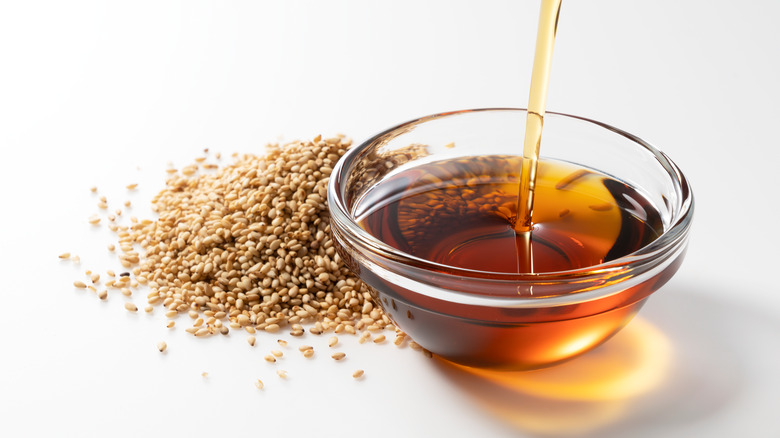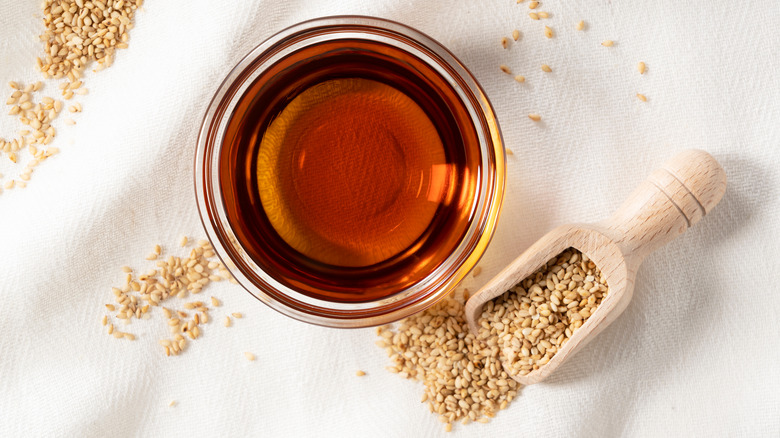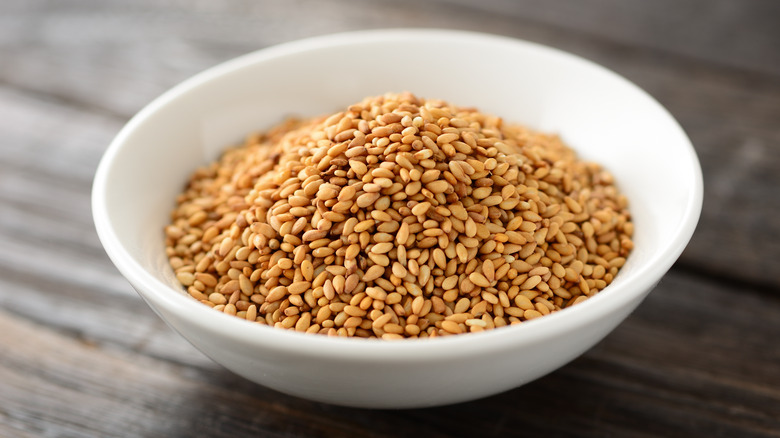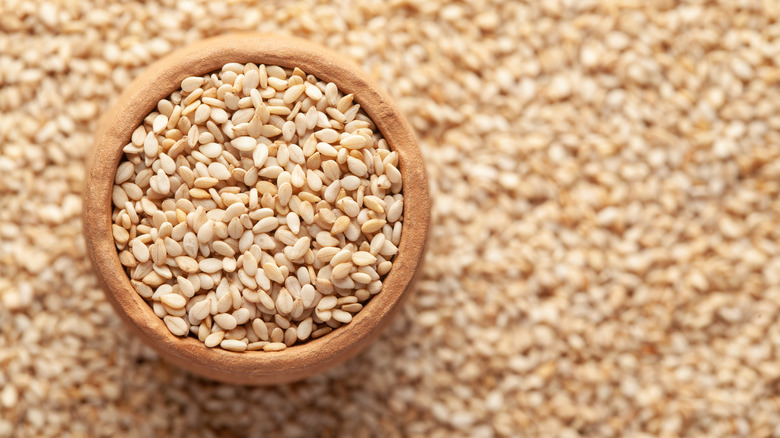This Country Produces The Most Sesame Oil Worldwide
Sesame oil is used in various dishes, especially Chinese, Japanese, and Middle Eastern cuisine, per WebMD. The distinct flavor and aroma lends itself to the dishes as an additional flavor profile rather than just a frying oil. Whether it's kung pao chicken, seared tuna, or an appetizer of hummus, sesame oil can be found in many of our favorite takeout dishes.
It also has several health benefits: Sesame oil is full of omega-3 and omega-6 fatty acids, which can help prevent heart disease and cancers, as well as improve immune health. It is also full of antioxidants like vitamin E, sesamol, lignans, and sesaminol. Per WebMD, these can prevent chronic diseases by fighting free radicals. Sesame oil could even potentially act as an anti-inflammatory to soothe cramps, toothaches, and joint pains, as it has been used in traditional Taiwanese medicinal practices. Some research has even shown sesame oil to reduce and regulate blood sugar levels.
History of sesame oil
Sesame oil is one of the oldest vegetable oils in the world, with the ancient Babylons cultivating it, and how records from the ancient Greeks mentioning it have been found, per the American Botanical Council. The site states that some ancient sesame seeds and oil extraction machinery have been found near Armenia from as far back as 900 B.C.E. According to SPICEography, sesame oil was actually the only oil Babylonians used — and it may be the first cultivated oilseed in the world, predating cottonseeds and sunflower seeds.
There is some debate over the origin, but some historians believe that sesame seeds originated in China and spread to other countries via the Silk Road trade routes. However, historians also state that they have been used in Chinese foods and medicines for over 5,000 years and have become an integral part of Chinese cooking throughout the years.
Toasted vs. untoasted
Once the seeds are harvested, they can be toasted or pressed as-is (via Martha Stewart). Its smoke point of 410°degrees F doesn't make it a great option for deep frying, but it can add an extra depth of flavor when sautéing or roasting foods, such as puffed potatoes with miso-glazed eggplant. It's a great alternative to canola or grapeseed oil and can enhance the flavors of your food.
Toasted sesame oil is a little bit more expensive and has a slightly different flavor since heat brings out the deeper flavors of the seeds. WebMD states that the toasted seeds typically have a nuttier, richer flavor. Since the seeds have already been toasted before being turned into oil, frying with it is unnecessary and could make your food taste more bitter and burnt. Instead, just add a splash to your food to add a little extra flavor before serving.
One fifth of all sesame oil is from one place
Though the oil is commonly added to fried rice and pad Thai in restaurants all over the world, there is one place in particular that produces the most sesame oil in the world. Almost a fifth of the world's sesame oil comes from Myanmar, according to WorldAtlas. Myanmar's average production is 196,789 tonnes, making up 18.3% of the production. According to MyLocalPassion, sesame seeds are grown in the Magway region of central Myanmar. The plants thrive in warm climates and only need light watering to develop. Once they've grown into seed pods, they can then be harvested, per Gardening Know How.
Closely following Myanmar is China, which produced 194,804 tonnes on average. China typically produces black sesame seeds, which are often crunchier and have a stronger flavor than their white counterparts (via Healthline). They may also have nutritional differences as the black seeds edge out their white counterparts with certain nutrients like copper, potassium, and calcium, reports KODGAV UK. Theories suggest that this is thanks to the intact exterior hulls.



